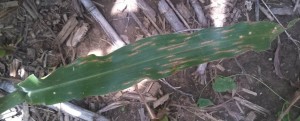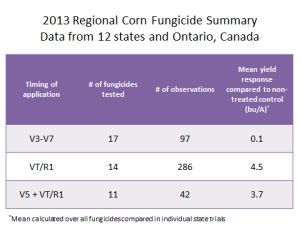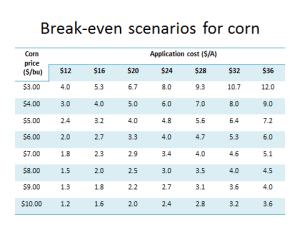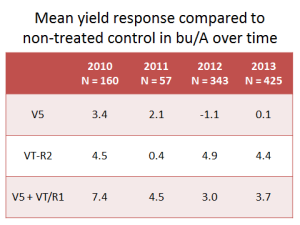With corn tasseling in Tennessee, it is time to consider a fungicide application.
Most corn diseases are favored by the humid and hot weather that has hit Tennessee. One of the most common foliar corn diseases in Tennessee is gray leaf spot (GLS) caused by the fungus Cercospora zea-maydis. Right now GLS can be found in the lower canopy of susceptible hybrids, as I have seen in multiple research plots in Jackson and Milan. GLS starts as small, necrotic, brownish spots which might have chlorotic, yellow halos on the lower canopy leaves (Picture 1). These small lesions expand and turn tan to gray in color and elongate within the veins of the leaf, resulting in sharp edged lesions (Picture 2). GLS is more common in continuous corn fields. Pre-tasseling and tasseling corn should be scouted for GLS and other diseases to better guide fungicide application decisions.
Deciding to apply a fungicide to corn should be based upon multiple factors including:
- Hybrid (hybrids susceptible to GLS and other diseases are at higher risk for disease)
- Cropping history (continuous corn is at higher risk for disease)
- Disease pressure (diseases should be clearly identified (see Corn Diseases in Tennessee at UTcrops.com for disease pictures) to better choose a fungicide with good efficacy for that specific disease, see the Corn Fungicide List at UTcrops.com)
- Weather conditions/irrigation (corn under irrigation or in years with moderate to high rainfall is likely to be at higher risk for disease)
Research data from University of Tennessee and other universities has continuously found these factors to strongly influence the magnitude and consistency of yield response to a foliar fungicide application in corn. The higher the risk for disease the greater the potential a corn field has from benefiting from a fungicide application. Lastly, fungicides applied at tasseling have shown in university research trials to have the most consistent results for controlling disease and protecting yield. Three tables below are from the 2013 Regional Corn Fungicide Summary data from the Corn Disease Working Group (CDWG), compiled by Dr. Kiersten Wise at Purdue University. Table 1 shows the mean yield response of fungicide applications compared to non-treated control across 12 states and Ontario, Canada (keep in mind the data is across areas with variable weather conditions, field histories, and varying disease pressure). Table 2 lays out the break-even scenarios for fungicide applications in corn considering corn price and application costs. Table 3 shows the mean yield response of fungicide applications compared to non-treated control from trials in 2010, 2011, 2012, and 2013.






